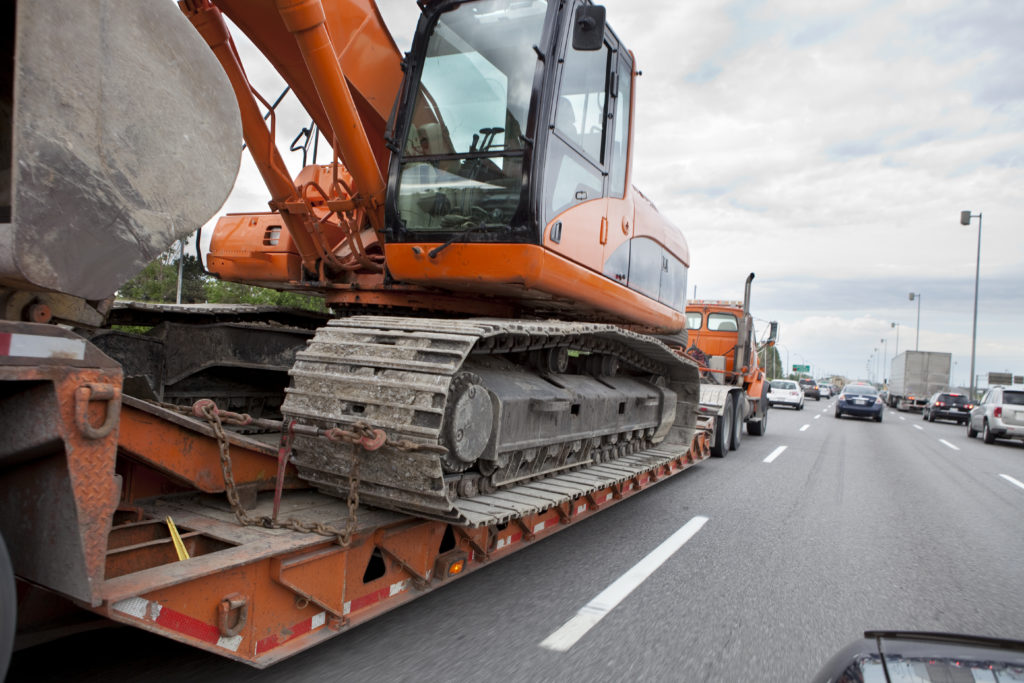Heavy Equipment Transport
What is Heavy Equipment Transport?

Heavy haul trucking is the hauling of overweight, oversize or specialized shipments. Generally, shipping heavy equipment will require the use of step-decks, RGN’s or other specialized trailers that can haul over-dimensional or overweight loads. Although the federal government requires each state to set its own regulations for hauling heavy shipments, the heavy haul is generally classified as cargo that exceeds:
- Width of 8 feet
- Height of 10 feet
- Length of 27 to 100 feet
- Gross weight of 30,000 + pounds

Oversized and Large Vehicle Hauling Experts

Finding the right company to transport oversize vehicles is a difficult task. Many transport companies lack the expertise of shipping oversized vehicles and as a result, shy away from the challenge. Our experience in the transport industry has equipped us with the know-how’s to efficiently transport any oversized vehicles.
Frequently Asked Questions

How much does Heavy Equipment Transport cost?
Unlike other service-based products, oversize vehicle transport does not have a set cost. The cost is determined by a few factors that change with every move. Some of the factors we use to calculate the cost of transport include pickup and delivery locations, truck type, type of vehicle, etc. To get the actual cost of an oversize transport, we advise speaking to our transport specialists with the details about your move.
Factors we use to determine the cost of a large vehicle transport:
- Distance: By far, the most important factor that determines the cost to transport a vehicle.
- Vehicle Transport Make & Model: The second most important factor when determining cost.
- Vehicle Transport Type: Due to their size and weight, oversize vehicles require specialized trucking equipment.
- Condition: Additional equipment is necessary to transport non-running vehicles.
- Seasonality: Vehicle transport during the winter season is generally more expensive than transporting a vehicle in the summer.
How do prepare my vehicle for transport?
Reduce the chance of damage by preparing your vehicle for transport. Although the risk of damage during vehicle transport is slim to none, you still want to make sure you do everything you can to ensure damage-free transport. Here are a few things we advise:
- Record any pre-existing damage: Noting all pre-existing damage on your vehicle will make it easier for you and the carrier to identify any new damage on your vehicle.
- Take pictures of your vehicle: We recommend taking pictures of your vehicle from all angles and pictures of any pre-existing damage.
- Perform a mechanical inspection: Perform a maintenance check to identify if any mechanical issues. All vehicles must be operable unless previously noted.
Do I need to calculate Density?
Yes, Density is the pound per cubic foot weight of your shipment. Whether it is being shipped on a pallet, in a container, flat racked, or lift−on/lift−offed, the density informs the hauler most of what they need to know about your shipment’s dimensions to get it moving.
How is Heavy Equipment shipped?
- Container Shipping: Container shipping allows for easy loading and unloading of freight conveyed in standard twenty or forty-foot containers. However, when shipping large machinery it may not be feasible to fit your shipment into a standard container. This may result in the need to disassemble your heavy machinery and equipment to make fitting it into a container a viable option.
- Roll on Roll off: Roll−on/Roll−off, or RoRo, is the simplest way to load and ship, provided your shipment has the enviable ability to be rolled. Wheeled heavy machinery can be easily loaded onto all manner of shipping conveyances, whether those are trailers, containers, or ship decks. This ability will save you time and money, the only downsides being the space wheeled machinery tends to take up and the logistical difficulties of stacking wheeled machinery to maximize space.
- Cost: The cost of shipping heavy machinery is based on several mitigating factors, the four most important of which are: density, priority, insurance, and destination.
